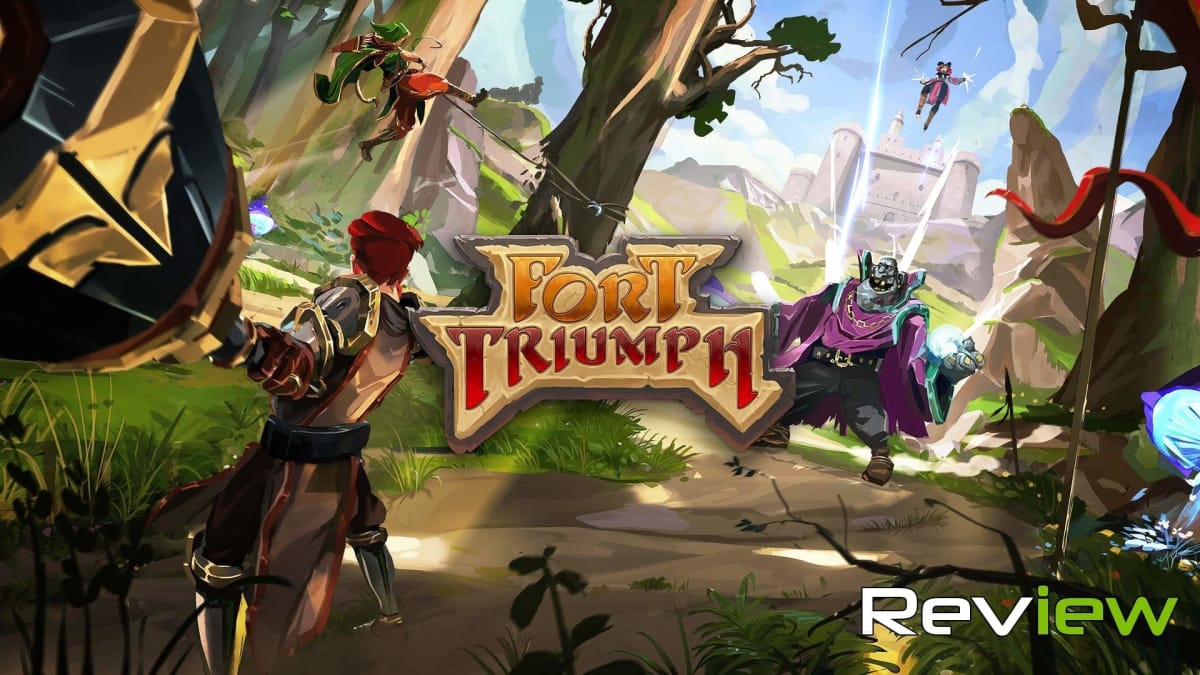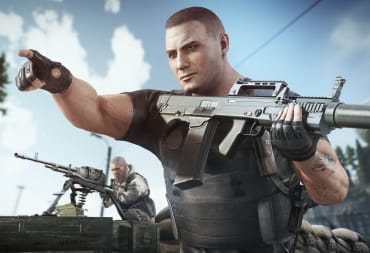When you think about squad-based strategy games, oftentimes you think of modern times or the future. We've had our share of fighting aliens in XCOM and Phoenix Point, but why not a more fantastical period? Maybe we want to be able to miss 95% shots against wizards and fight against classic fantasy creatures? Fort Triumph (developed by CookieByte Entertainment and published by All in! Games) is a new release that mixes the squad-based battles of XCOM with the aesthetic and overworld strategy of Heroes of Might and Magic. Add in a dash of physics puzzles, and you've got yourself a practical addition to the strategy genre.
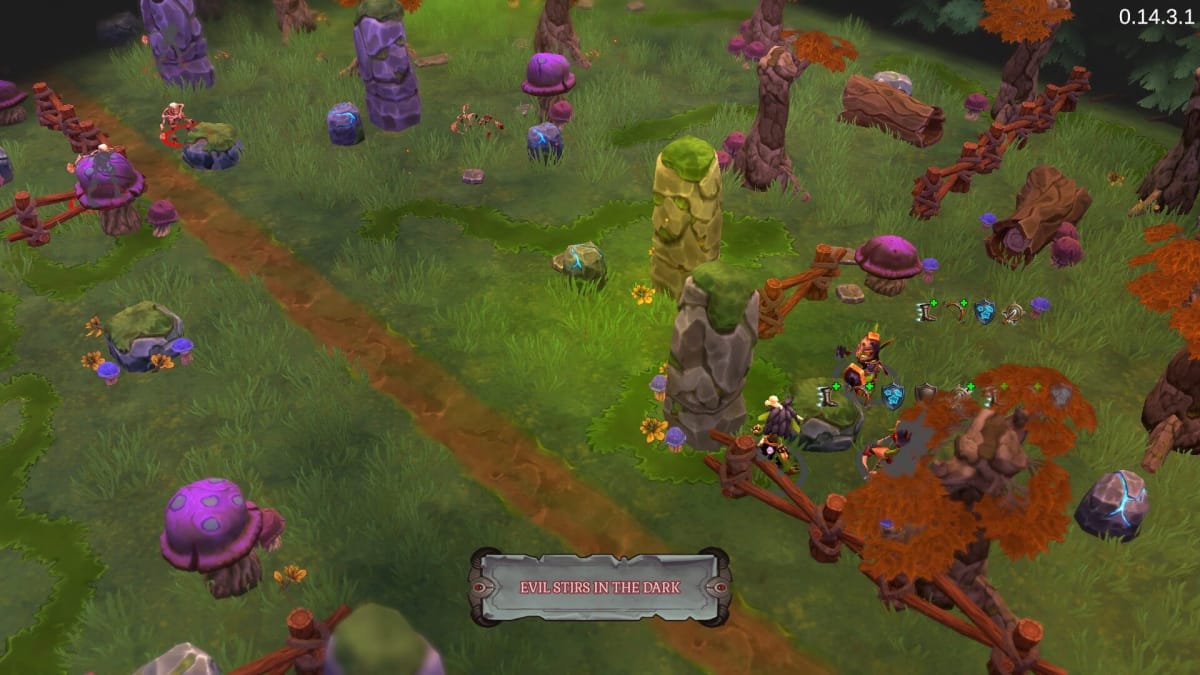
The game has two modes that you can play. There's a campaign mode that contains the game's only tutorial on how to play, implying that this is what should be played first, and a skirmish mode where 1-8 players battle each other on randomly-generated maps. The campaign's story is a pretty boilerplate fantasy story with goblin invasions, the plots of nobles, and slight tongue-in-cheek humor that's likely hit-or-miss for many. It takes place across three different acts/maps, lasts 10-20 hours, and has you exclusively playing as the human faction.
There is some weirdness in the story that comes with how the game handles getting new heroes. Each member of your band of down-on-their-luck folks trying to earn coin are singular characters with distinct personalities that can die for good in combat. If that happens, they're replaced with new heroes who share those exact personalities in story missions. Every single paladin you get is an ardent believer in the divine right of the nobility, and every ranger will all be cynical of the nobles and their scheming. It means the story never gets sidetracked by an untimely death, but it does make things a bit bizarre when your newly-hired mage seems to be exactly the same personality-wise as the one who got shredded to pieces a few turns ago.
However, the meat and potatoes of Fort Triumph lie in its gameplay. Outside of combat, you have a strategic overview similar to that of games like Age of Wonder. This view is where you move your parties of heroes and collect resources and artifacts that improve your town's infrastructure and heroes. The strategic overview is much more simplified compared to HoMM. You only have three resources to manage (the gold-esque beetcoins, the rarer magic, and renown, which is earned by doing well in battles and is spent on general hero upgrades) and towns are very linear when it comes to developing them. Want to unlock more buildings? Just build/upgrade the university. The towns are different depending on your faction's race (humans, undead, trolls, or goblins,) but it comes down to slightly varied boosts for your heroes. Goblins, for instance, can build a building that adds bleeding effects to their attacks (or improves them if the attack already causes bleeding.) It's easier to grasp compared to other games, although some players may want something juicier.
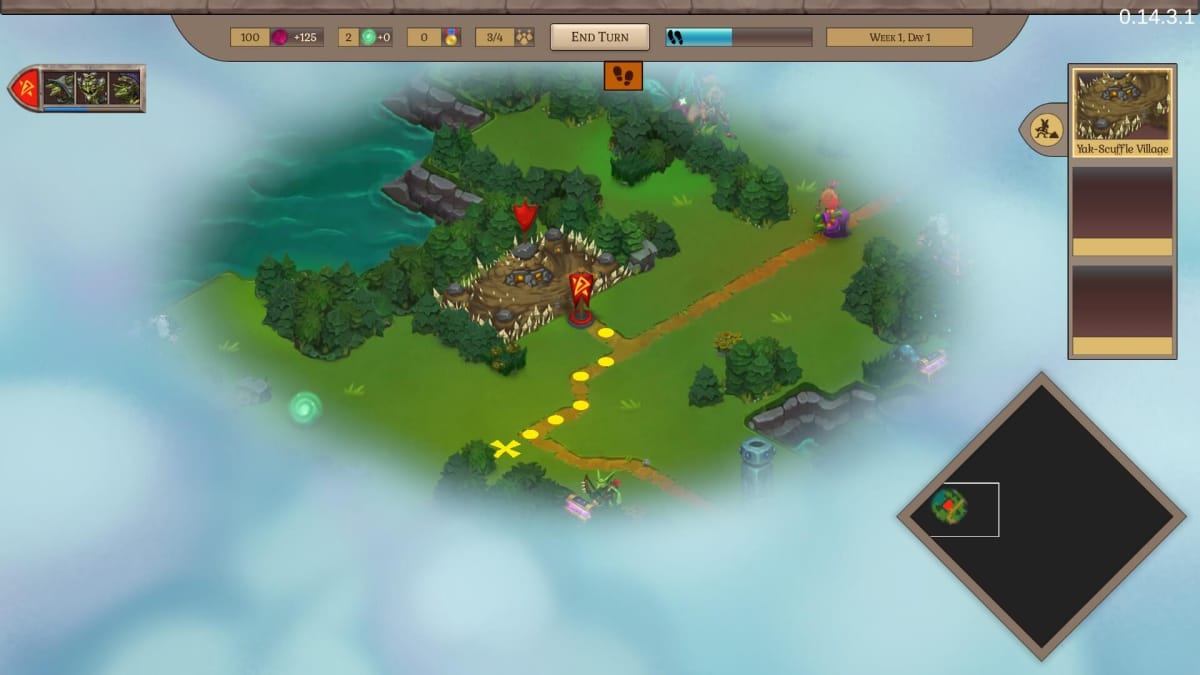
Being a squad-based strategy game, most of your progression centers on your heroes. You have four classes to play with, each with 12 unique abilities, an innate racial trait and a random quirk. Paladins and Savages act as your melee combatants while Mages and Rangers take up the rear. Unfortunately, here lies one of the game's major flaws. While there is some randomness in what abilities you can get when you level up, it's not uncommon for heroes to feel very samey due to the small selection of classes. It's even more noticeable when you take into consideration the various races.
In many strategy games, your choice of race/civilization usually plays a major part in what you can and can't do. These differences can be as simple as being better at a certain aspect of the game or the differences can be drastic. In Civilization V, for instance, we had Venice, a civilization that earned lots of money from trading but had no ability to create settlers to found cities. Instead, they could convert city-states into puppet cities by using a unique unit that replaces the Great Merchant. Such a civilization can greatly shake up any game they appeared in. Fort Triumph, however, has barely anything special setting the races apart. Anyone in this world can be a paladin capable of wielding holy magic against their enemies, even if they happen to be an undead being raised by dark magics.
Fort Triumph's combat is where it really shines. In battle, your group of heroes faces off against enemy heroes or NPC monsters (which have a lot more variety compared to your selection of heroes) on randomly-generated maps. Your characters (usually) have three action points per turn they can spend on movement and using their abilities to fight enemies, help their allies, and control the environment. However, sometimes you want to keep some action points available so you can have your ranged heroes go on overwatch or brace for impact to halve incoming damage. Other than some minor oddities when it comes to determining cover (such as that cover only counts if you're standing right next to it and/or it blocks vision,) the combat is what you'd expect with one major addition.
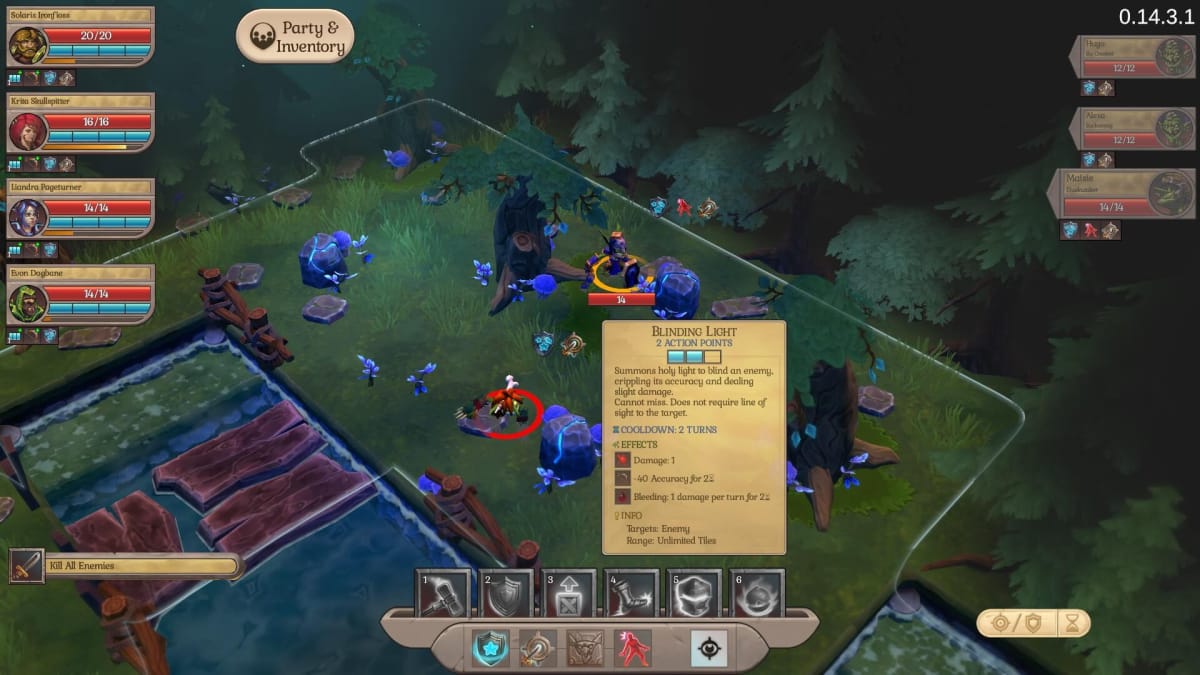
A key strategy to winning battles in Fort Triumph is to make use of physics and use the environment against your foes. Certain skills, such as the Kick melee classes get or the Ranger's Grappling Shot, are capable of moving their targets around. If you make objects hit your opponents (or you slam your opponents into each other,) you can damage and stun your opponents, preventing them from attacking. Unless you're dealing with stun-resistant enemies, the best strategy for battles often involves finding the best way to kick your foes into rocks or topple trees on your foes. The unique physics-based combat makes the battles much more interesting as you work on finding the best way to physics your foes to death.
Fort Triumph ends its two years in Early Access with a final product that delivers a reasonably strong entry into the squad-based strategy genre. While it's certainly lighter on depth than other games and could use more variety in terms of heroes, it's light depth makes it easier for more casual players to get into. The ability to fight your opponents with physics and the environment is a great addition helps add depth to battles. If you're looking for a fairly light strategy game that brings the squads of XCOM to a fantasy setting, then Fort Triumph will make a good addition to your library.
TechRaptor reviewed Fort Triumph on PC via Steam with a copy provided by the publisher. The game is also available on PlayStation 4, Xbox One, and Nintendo Switch.
Review Summary
Pros
- Easy to Understand, Strategic Gameplay
- Physics-Based Combat Adds Depth To Battles
- Colorful Graphics
- Charming Aesthetic
Cons
- Races/Factions All Very Similar
- Hit-Or-Miss Humor Abounds
- Lack Of Hero Classes
Have a tip, or want to point out something we missed? Leave a Comment or e-mail us at tips@techraptor.net
